Looking for an awesome tool to write your software documentation? Your search ends here as we bring you the best software documentation tools on the planet! Read on…
One of the hardest parts of writing software is not the code, it’s documenting it. The majority of ‘techies’ working in software often put off software documentation as they may find it to be complex, time-consuming, unnecessary, an extra expense, or straight-up- boring.
However, software documentation is a critical part of a software development lifecycle and must be carried out to create a full-fledged and highly reputable piece of software. If you don’t enjoy the process of documenting your software, this post is for you.
We’ll cover how some of the best software documentation tools on the market can make this seemingly mundane activity a cakewalk. But the question many of you are thinking is- what exactly is software documentation and why it’s important.
What is Software Documentation?
Once you are done with software development, you already know how each element works and have already memorized or made notes of key functions and capabilities, thus finding the process of documentation unnecessary. However, without documentation, your software is like a black box.
A black box, in terms of software, can be defined as an object or a system whose inner workings, designs or implementations are hidden from the outside world. The system works like its intended to, however, it can’t be customized to your wants and needs.

This means that if some new hire or new developer joins your team, he won’t be able to peak into the system and understand how it works easily. If the person who worked on a particular piece of software leaves, he takes that information with them.
Documentation is what turns your black box into a white box, aka a system whose internal workings and implementations can be viewed by its users and developers, making it easier to understand and customize.
Read more: How To Create A Software Design Document?
List of Best Software Documentation Tools Out There
To make the process of software documentation as easy for you as possible, we have curated a list of some of the best software documentation tools on the market.
These tools will not only provide you with all the tools needed for faster software documentation but will also make this seemingly boring process, a bit more fun! Let’s dive in, shall we?
1. Software Documentation Tool: Bit.ai
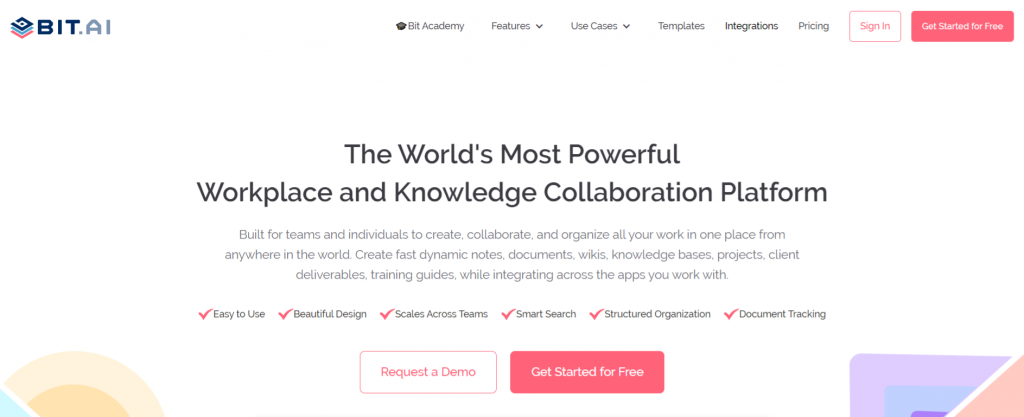
Bit.ai is new-age software documentation and knowledge management tool that helps teams to collaborate, share, track, and manage all company knowledge in one place.
Bit documents, unlike your standard Word Docs, are interactive. This means developers can easily add code blocks to a document with a single click!
Whether your team is creating software documentation, technical specs sheets, training manuals, best practices, client support material, etc. they can easily add code blocks or embed snippets of GitHub Gists and Pastebin code directly into a Bit document. It’s a smart way to add context to the code snippets you are sharing.
Multiple people can simultaneously collaborate on a Bit smart document in real-time. It’s a great way for software developers to handle different aspects of the software together under a single roof. Bit’s sleek, minimal, and distraction-free editor makes a great tool for documentation. Users can also make use of Bit’s wiki features to interlink important documents, making it easier to share knowledge across documents.
The best part is Bit’s support for Markdown which allows developers to quickly create and format text without any distractions. Markdown is supported by GitHub and other software development tools, making it easy to share the work you do inside of Bit with other platforms. Once you are done creating your documents, you can easily export them as PDFs, Word files, Markdown, etc. or can even embed your Bit docs on your company website or blog!
Bit allows users to manage edit permissions and information access that suits your organizational needs. It supports features like document tracking, client portals, data rooms, password protection, access restrictions, etc. depending on your organization’s needs.
We recommend that developers use video recording tools like CloudApp and Loom to bring their video screen-sharing video tutorials directly into their technical documents. It’s a smart way to share screens and provide direction to your team, future employees, and customers you’re working with.
Bit works with these two applications along with 50+ other integrations to make sure your technical documentation brings in various types of digital content.
Bit provides a common workplace for software developers to collaborate, document, share their knowledge, brainstorm ideas, store digital assets, and innovate together. The best part is that this knowledge is safely secured in your workspaces and can be shared (or kept private) with anyone in your organization or the public!
Along with robust features and collaborative functionalities, Bit offers some beautiful, fully responsive templates for software developers to make the process a lot more fun.
2. Software Documentation Tool: ProProfs Knowledge Base
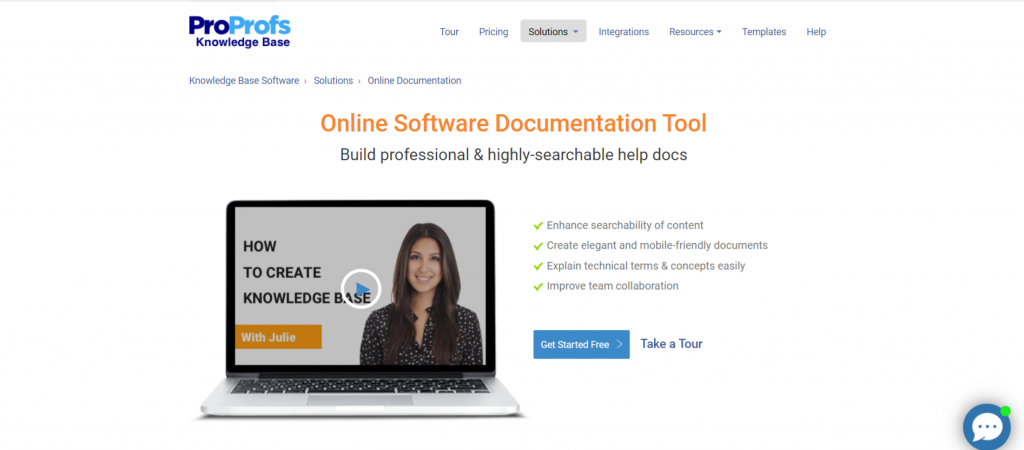 Employee onboarding is something you cannot ignore, especially in the case of remote workers who are spread across geographies and only have a certain idea of your firm and the work you do. This makes onboarding all the more crucial for remote employees.
Employee onboarding is something you cannot ignore, especially in the case of remote workers who are spread across geographies and only have a certain idea of your firm and the work you do. This makes onboarding all the more crucial for remote employees.
The first few days of new employees are extremely crucial, as that’s when they have the time to invest in learning about your organization and the roles they are hired for.
For optimum utilization of this time, it’s best to use a tool like ProProfs Knowledge Base software – simple, powerful, and feature-rich.
This tool helps you create an online employee handbook to familiarize new hires with your firm’s work dynamics, policies, vision, mission, and, most importantly, the role that remote employees are going to play in your organization.
You don’t want your new hires to get bombarded with emails on the very first day of their joining. So, it’s best to offer them a platform that provides them all the relevant information they need to get started. ProProfs Knowledge Base software helps you achieve this with ease.
It’s an excellent tool to create a company-wide knowledge platform, more like an employee handbook, that can be accessed easily on multiple devices, including laptops, mobile phones, and tablets. The software’s compelling features, such as its MS Word-like editor, Google-like search functionality, customization options, workflows, and more, work together to provide you an unmatched experience.
Even minute tasks like adding text to multiple pages at a go, creating toggle content, adding your firm’s logo and brand name, etc. can be easily done with this powerful tool.
All in all, it’s a great tool to keep emails at bay, calls at a bare minimum, and provide remote employees with a smooth and hassle-free onboarding experience.
Read more: Top 11 Code Editors for Software Developers
3. Software Documentation Tool: GitHub
[/vc_column_text]
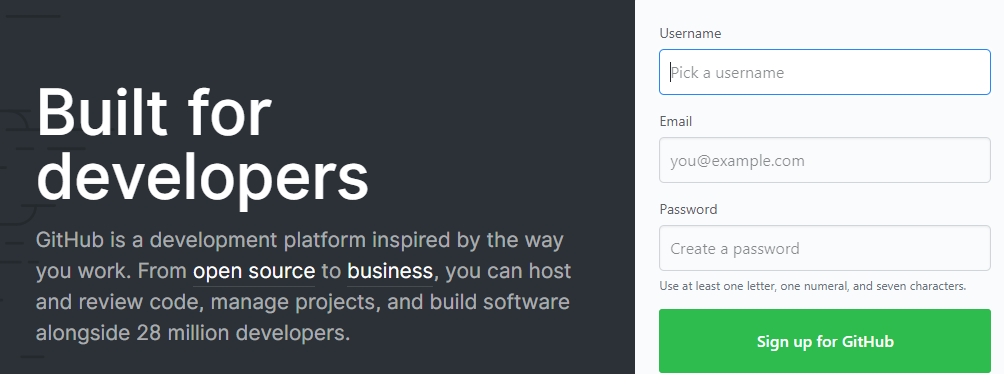
If you work in the software world, the chances of you not being familiar with GitHub are next to nil. GitHub is a community for developers to host and review code, manage projects, and build software alongside 28 million developers.
GitHub believes in the power of quality documentation and knows that every healthy software project needs one. On GitHub, you can create well-maintained docs use GitHub pages and Wiki features.
GitHub pages let you convert your GitHub repositories and documents into a visually appealing website to showcase your portfolio, documentation, or your projects easily. GitHub pages provide you with one free webpage, GitHub hosting, and the ability to route a custom domain. Use Jekyll (a tool that converts plain text files into websites) and easily create an elegant web page.
If you don’t want a separate website for your documentation, every GitHub repository comes equipped with a section for hosting documentation, called a wiki. Wiki is the place to store details about your project- how to use it, how it’s been designed, and so on. It’s a great way to quickly store all the critical information about your project for others to use.
Read more: What is a Software Requirements Document?
4. Software Documentation Tool: MarkdownPad
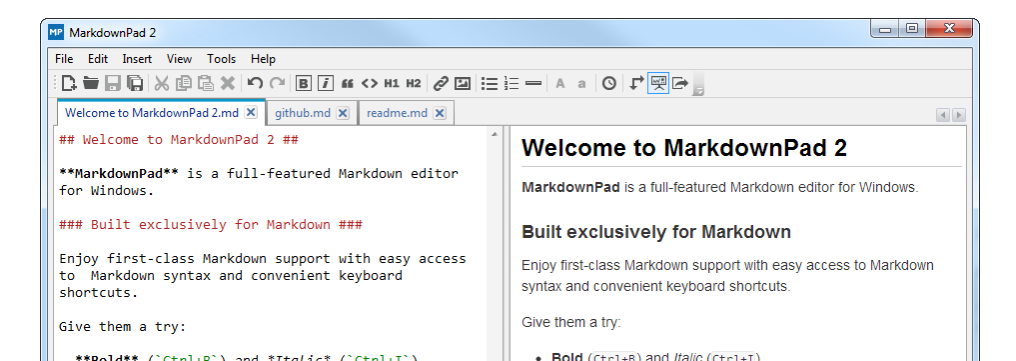
MarkdownPad is one of the most famous markdown document editors for windows. You can use MarkdownPad to write articles, READMEs, and of course, software documentation.
With instant HTML previews, users can quickly see what their documents look like in HTML as they create them.
MarkdownPad offers a lot of customizing options like color schemes, fonts, sizes, and layouts. It even supports your custom CSS stylesheets and has a built-in CSS editor. Users can easily convert their written text into HTML or even export their documents as PDFs.
With a simple, easy to use user interface, MarkdownPad is a great document editor for software documentation. However, the lack of cloud features and the fact that it’s only supported on windows can be a bummer for a lot of you out there.
Read more: Best Cloud Document Management System In 2022
5. Software Documentation Tool: Read the Docs
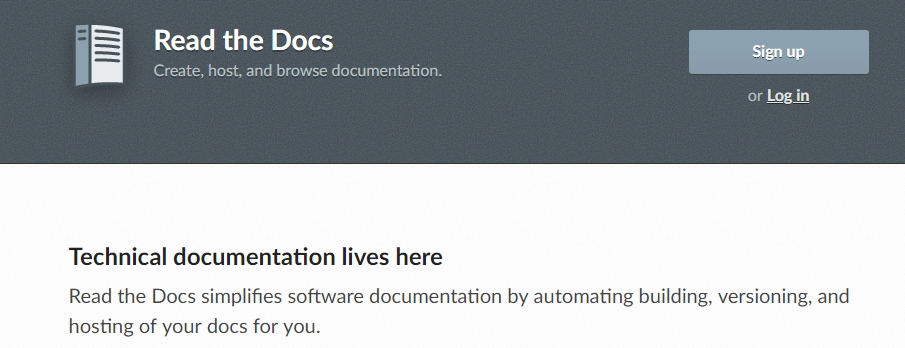
Read the Docs is a free platform for software documentation, used by millions of developers worldwide. Read the Docs simplifies software documentation by automating building, versioning, and hosting of your docs for you. Read the Docs hosts your software documentation for free and currently supports over 90,000 projects.
Apart from hosting your software documentation, you can even convert and view your documentation as PDFs, a single page HTML, and eReaders. without the hassle of any additional configuration. Developers can even host multiple versions of their docs easily on the platform. Read the Docs is free and is funded by its strong community of supporters!
6. Software Documentation Tool: Doxygen

If you want to generate automatic documentation from your C++ code, Doxygen is a great tool. Recently, Doxygen has also started documentation support for other popular programming languages such as C, Objective-C, C#, PHP, Java, Python, IDL Fortran, etc.
Doxygen directly extracts the documentation from the sources, making it easier to keep the documentation consistent with the source code. Users can then export the documentation in RTF (MS-Word), PostScript, hyperlinked PDF, compressed HTML, and Unix man pages. Users can even generate graphs and diagrams from the source code, making it a highly customizable and feature-rich tool.
Doxygen is free for use and works on all top operating systems- macOS, Linux, and Windows.
Conclusion
There are many software documentation tools out there in the market. However, the above-mentioned ones are the best of the lot. If you want to work with your team and need a smart document editor as well as a content management tool, you can give Bit.ai a try.
You can’t go wrong with any of the tools mentioned, it’s just a matter of personal preference. We hope you find your dream tool and write awesome documentation for your awesome software!
Is your favorite tool missing from the list? Tell us about it in the comments!
If you have another tool that deserves a review and a mention here send us an email.
Further reads :
Best Collaborative Document Editing Software in 2022
The Ultimate Guide To Document Management Workflow
13 Programming Blogs and Websites to Improve Your Coding Skills
Top 5 Business Process Management (BPM) Tools
Workflow Management Software Every Business Should be Using
Top SaaS Products for Small Businesses in 2022
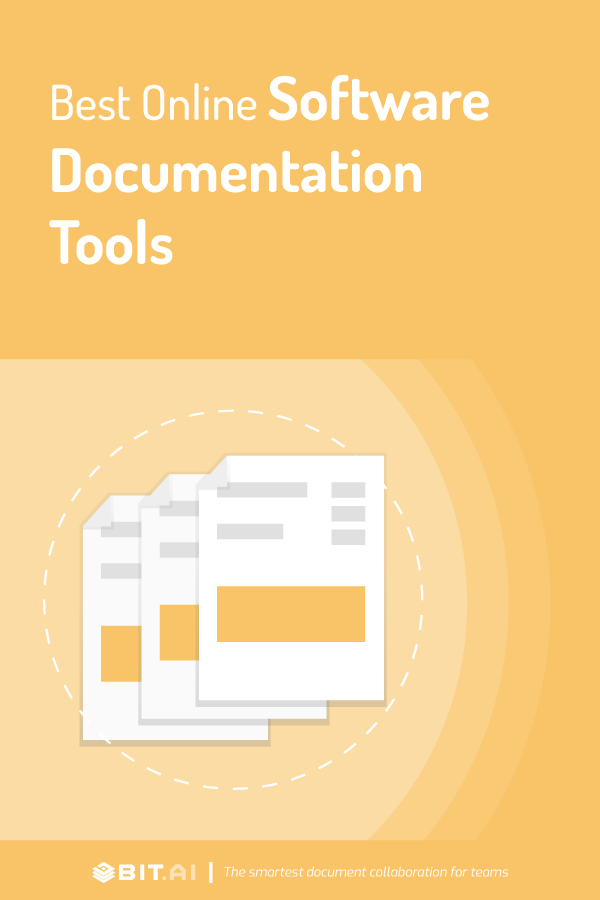
Related posts
Bit.ai | Watch to Learn More
What is Bit.ai?
Bit.ai is an innovative AI-driven knowledge and Document Managment suite designed to empower knowledge workers by streamlining the creation of, documents, wikis, and notes. With an intuitive interface and seamless integration, Bit.ai acts as a versatile assistant to help you collaborate, generate, organize, and visualize your ideas effortlessly. Whether you are drafting a report, managing a project, collaborating with your team or clients, or brainstorming new concepts, Bit.ai brings intelligence and creativity to every aspect of your work process.


